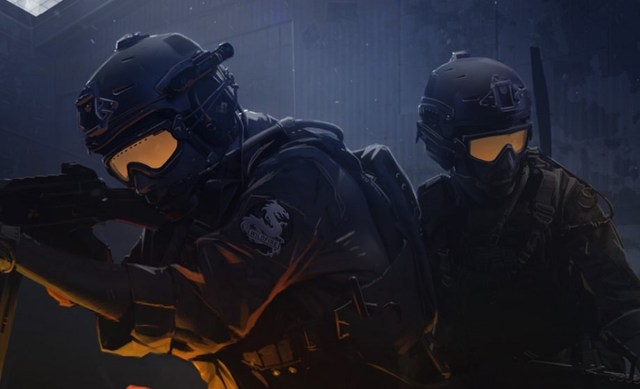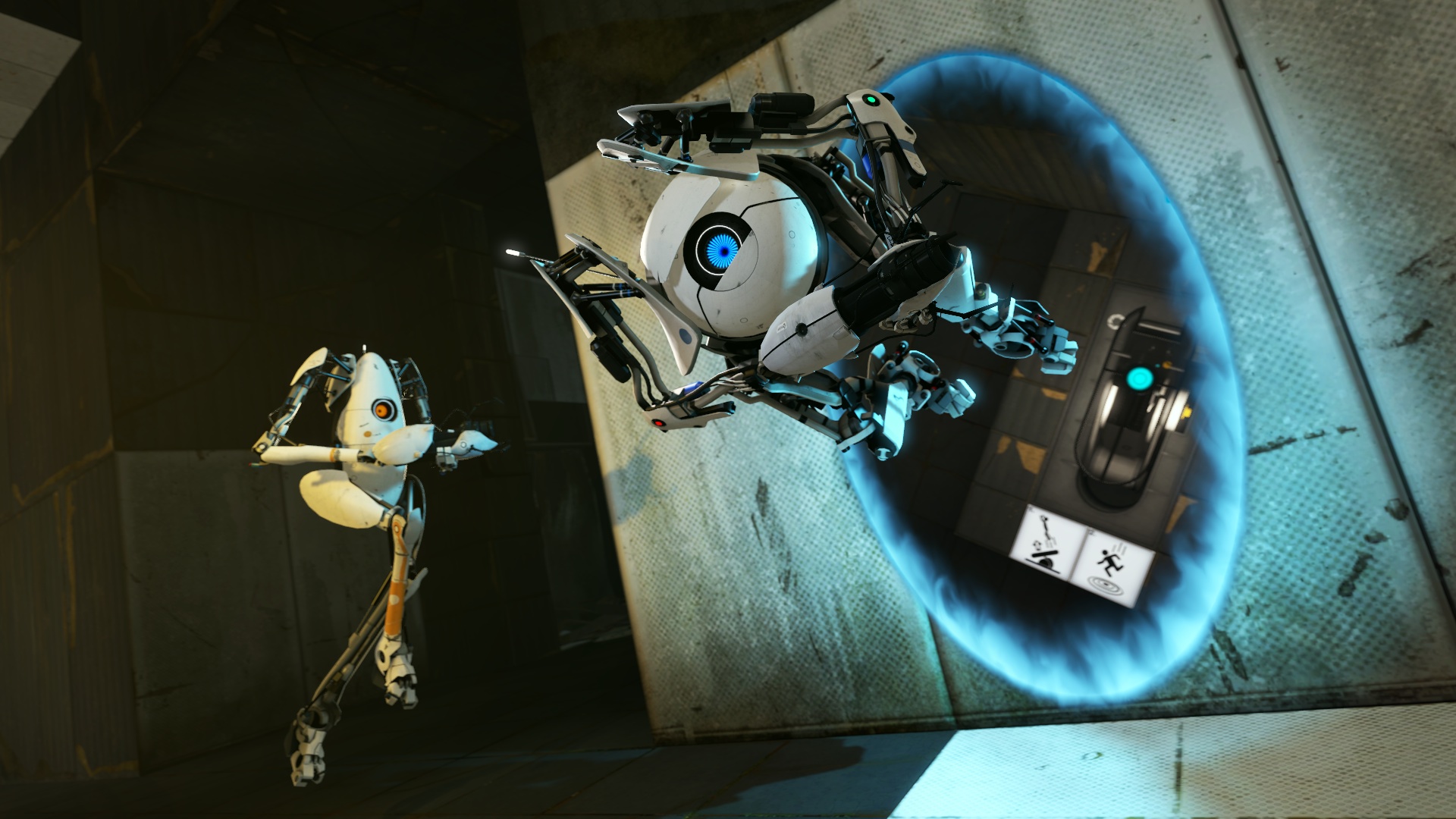Rise and shine, Valve fans. Rise and shine.
People love Valve games as much as the company seems to hate making them. Valve has changed not just gaming but how we buy games, and has one of the most fervent followings in the history of video game companies. We just know everyone will agree with everything we have to say here.
10. Aperture Desk Job
Valve likes to make up for games that never come out by just releasing other games that nobody even knew were in the making. That’s the story of Aperture Desk Job, a small but hilarious experience meant to introduce people to the then-new Steam Deck.
Once again, Desk Job puts players in the first-person perspective, but there’s a twist. We no longer play as a silent hero, but rather as one silent employee of the company responsible for the portal gun and other less interesting things. What do players have to do? Uncover a huge conspiracy and prevent the company from opening a portal that will bring aliens to our world? Nope, we have to test the toilets. Only Valve would put players through such a cheeky task, but damn, do they pull it off. It’s unlikely anyone will forget this hilarious little treat.
Strengths: It provides fun additions to the whole Portal lore. Also, it’s free.
Weaknesses: It’s not the complete Valve experience that players have so desperately been waiting for.
9. Half-Life: Alyx
While not exactly a game that came out of nowhere, Alyx came out shortly after its reveal, so it also counts as a nice treat. A nice, beautiful, engrossing blockbuster treat.
Alyx shows Valve at its most economically adventurous, a company risking it all to make a AAA experience for the much trickier VR gaming market. Alyx invites players not just to see City 17 but to experience it like never before. Alyx takes place a short while before the events of Half-Life 2, and makes the best possible use of the interaction capabilities provided by VR to make City 17 as darkly engrossing as anything we’ve ever seen in a game.
Strengths: Finally, an authentic AAA VR experience. SPOILERS: it presents itself as a prequel but also plants some interesting seeds for the future of the series.
Weaknesses: Some repetitive puzzles. Not everyone can afford VR. Only a relatively low percentage of the gaming population will get to experience it, which may also affect investment in future projects of this kind and size.

8. Dota 2
The original Dota may have kickstarted the MOBA craze, but it was Dota 2 that perfected it. Tired of the classic’s look and of League Of Legends’ “simpler” gameplay? Then step it up and join this beautifully unforgiving arena.
Dota 2 made Dota go from the most ancient-looking MOBA to the most beautiful of the bunch. It’s not just surface-level stuff, though, as mechanics such as “denying” add numerous layers that make Dota 2 by far the most challenging MOBA in existence. If there’s one fair complaint to be made about this game, it’s that it might prove too demanding for people trying to get into it without previous MOBA experience.
Strengths: A massive update of the classic Dota. It’s not League Of Legends.
Weaknesses: Might prove too challenging for more casual MOBA fans. It can get just as toxic as League Of Legends.

7. Left 4 Dead 2
we feel safe ranking L4D2 instead of the original because no one will call it an inferior sequel. L4D2 ate the entirety of the original Left 4 Dead and features its entire campaign. That’s especially good considering how the original L4D showed the world that four-player co-op shooting games rock. On top of all the hopefully-friendly banter, L4D2 showers players with amounts of quality zombie action never seen before — or since.
Left 4 Dead 2 is yet another top game in a Valve franchise that might inexplicably never get a 3rd entry. That sucks because it’s already so good that we just need new campaigns. Come on, those are probably not as hard to make as a new Portal or Half-Life game.
Strengths: The most fun 4-player co-op experience you can have. Don’t agree? Fine, you can play any of the hundreds of similar games that exist because of L4D2.
Weaknesses: Accidentally responsible for the swarm of zombie media that took over after 2009.

6. Counter-Strike: Global Offensive
CSGO is the Valve-made sequel to the original Counter-Strike, the Half-Life mod that changed competitive gaming forever. This triumph combined graphics superior to those of the otherwise maligned Counter-Strike: Source with a more refined version of the original’s gameplay.
We ask purists not to get mad at this choice. The original CS could very well have occupied this spot instead of CSGO, but it wasn’t originally developed by Valve.
Strengths: The tightest and most important competitive shooter in history.
Weaknesses: The community can get very toxic and its cosmetics market fuels some shady gambling operations.

5. Team Fortress 2
Ever heard of “The Seinfeld Effect”? It’s that feeling of disappointment some go through when they watch Seinfeld after having watched dozens of sitcoms inspired by Seinfeld. Why isn’t the show as funny as everyone said it would be? Well, it’s just as fun, it’s just not new anymore, and many newer shows might have improved upon some of its aspects.
Why did we write an entire paragraph that has nothing to do with games? Because Team Fortress 2 doesn’t suffer from that effect. Even though it completely redefined and reinvigorated the class-based shooter over ten years ago, it’s yet to feel anything other than fresh by anyone getting into it. So long as they avoid the bot-filled servers, that is.
Strengths: Probably the most fun class-based shooter in existence. It gave birth to Overwatch and, perhaps more importantly, who knows, Battleborn.
Weaknesses: Playing it nowadays could be challenging as many servers are swarming with troll bots.

4. Portal 2
We know Portal 2 ranks atop most of the Internet’s Valve best-of rankings, but please hear us out.
When it comes to gameplay, yes, the additions Valve brought in for Portal 2 make it a better game than the first one. Still, what cemented the first game as a masterpiece was its meticulous balance between gameplay and story. We’re not saying the writing in Portal 2 is bad. It’s great, actually.
The problem lies with the character progression of GLaDOS, which features some unnecessary retcons that kill the wickedly vile essence the character had in the original game. Other than that, yeah, it’s an all-time great.
Strengths: Bigger and better than the first gameplay-wise.
Weaknesses: Some plot retcons cheapen the (still great) experience.
3. Half-Life
Half-Life shows Valve at its most brilliantly counterintuitive. It changed everyone’s perception of what a shooter should be. It taught kids and adults alike that cerebral action in a more carefully planned out campaign can provide just as much fun as mindlessly shooting enemies.
It also revolutionized video game storytelling. Half-Life began the trend of ditching conventional cutscenes to instead just show everything happening in front of the player. This approach makes players feel like they’re right there in the middle of the action in a way that even Hollywood blockbusters fail to achieve.
Strengths: more inventive gameplay than you’d expect from a shooter. Way more of a narrative than you’d expect from a shooter.
Weaknesses: many fans point to the final segments in the world of Xen as a less-accomplished part of the game, but we actually welcome the attempt at something even weirder than the rest of the game.

2. Portal
If Half-Life made the world better by showing that first-person shooters needn’t be all about shooting, then Portal further improved it by showing that first-person games don’t even need to be shooters. How did Portal pull off such a feat? It’s simple, the game just introduced never-before-seen mind-blowingly revolutionary instant-travel mechanics that blew all of our minds and elevated the bar when it comes to gameplay.
And just as important as the whole “impossibly cool tech” is the story that resides at its heart. Games tend to struggle with comedy. This one excels not just at it, but even at implementing great comedy in an unbelievably bleak sci-fi setting.
Strengths: Some of the best writing we’ve ever seen — yes, even outside of games. Revolutionary mechanics paired with meticulous level design. The most fun villain in the history of video games.
Weaknesses: One could call it short, but it’s definitely a Short King.
1. Half-Life 2
Saying that Half-Life 2 changed the world would be doing it a disservice. Hell, the game’s first E3 tech demo was enough to do that.
Physics manipulation as a serious gameplay element, realistic facial animations, the best graphics of its time, HDR, and one of the most engrossing campaigns in the history of video games. Half-Life 2 was everything. Was there ever really any doubt? In fairness, there could have been. Did you know even Half-Life‘s own father, Gabe Newell, doesn’t rank Half-Life 2 atop his Valve ranking?
GabeN admits frustration over many of the decisions the team made during development, but, as people who merely experienced the end product, it’s hard to not just ask “What the hell are you talking about, man?”.
Strengths: It elevated the storytelling and worldbuilding of the original game. It showed that physics manipulation rocks, which means it’s somewhat responsible for all the cool things we can do in Tears Of The Kingdom. Its online Deathmatch mode is very fun and incredibly underrated.
Weaknesses: The story still yearns for a conclusion (wink wink).


